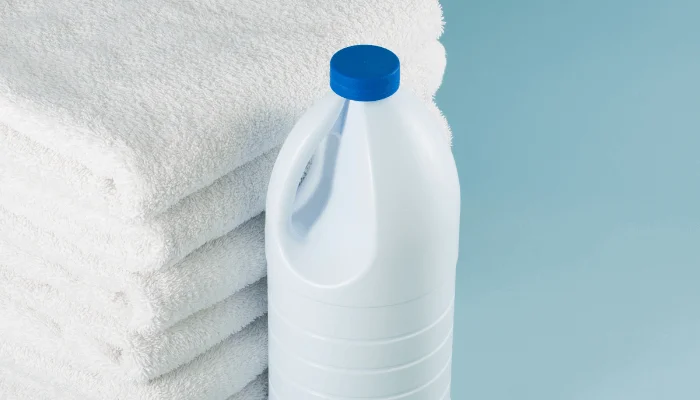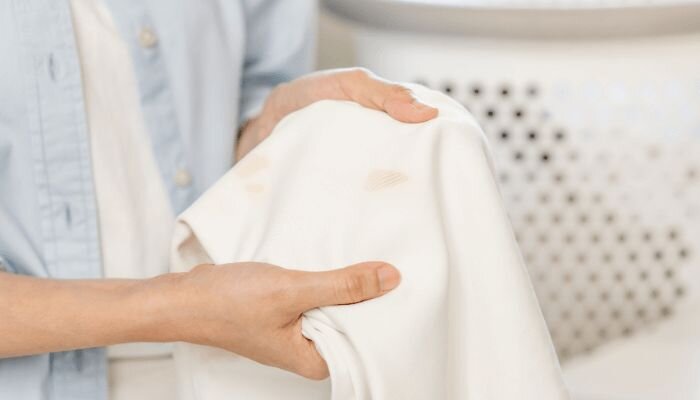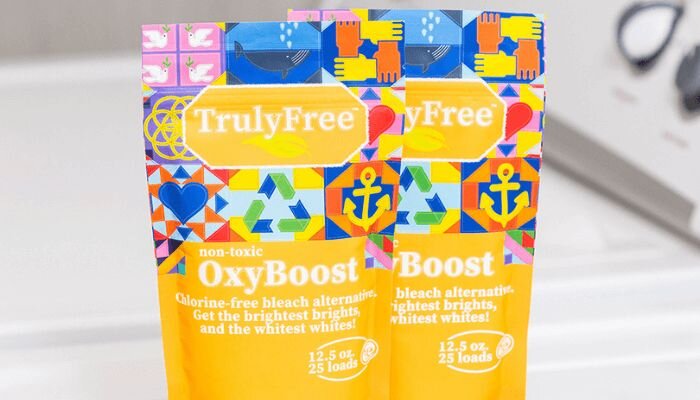- Shop
- Learn

Posted By: Tay Roberts
|
Posted On: 8/3/2024
Maintaining the brilliance of your white clothes often calls for harsh chemicals like bleach, which can be harmful to both your body and the environment. Fortunately, there are safer, bleach-free alternatives. In this blog, I’ll share an effective method to keep your whites looking their brightest without the need for toxic chemicals.

Bleach, while effective at whitening whites, can pose several health and environmental risks when used. Here's why bleach can be problematic.
☣️Respiratory issues: Bleach can exacerbate existing respiratory conditions like asthma and may even cause asthma in people who didn't previously have it.1 The fumes can irritate the lungs, especially in children whose respiratory systems are still developing.1
☣️Skin and eye irritation: Direct contact with bleach can cause irritation to the skin and eyes.1 2
☣️Cancer risk: Long-term exposure to bleach vapors may increase the risk of cancer.1
☣️ Toxic gas formation: When mixed with certain chemicals like ammonia or vinegar, bleach can form dangerous toxic gasses such as chloramine or chlorine gas.1 2
☣️ Environmental impact: Bleach can contribute to air pollution and affect water supplies and vegetation.3
☣️ Microbiome disruption: Overuse of bleach may negatively impact the human microbiome, potentially leading to various health issues.4
☣️ Corrosive properties: Bleach can damage or erode metal surfaces and should not be used on certain materials.5
☣️ Pet hazards: Bleach can be particularly dangerous for pets, potentially causing damage to their gastrointestinal tracts, pneumonia, and kidney damage if inhaled excessively. 5
☣️ Short shelf life: Diluted bleach solutions are only effective for 24 hours, while pure bleach only lasts 3-5 months, requiring frequent replacement.2
Given these risks, it's important to use a safer alternative when possible.

Hidden Culprits Behind Dingy Whites
I know from first hand that white clothing becoming dingy, gray, or yellow over time due to several factors is pretty frustrating, but I can help you understand why that is happening.
Everyday Wear and Tear
Regular use results in the accumulation of dirt, sweat, and oils, which can dull the brightness of white fabrics.
Environmental Factors
Exposure to pollutants, dust, and smoke can cause white clothes to lose their luster and appear gray or yellow.
Sweat and Body Oils
Natural oils and perspiration can penetrate fabrics, leading to yellowing, especially in areas like the underarms and collars.
Detergent Residue
Inadequate washing and rinsing as well as over use of detergent can leave detergent residues on clothes (especially conventional), which can attract dirt and cause graying.
Stains from Food and Beverages
Spills from coffee, wine, sauces, and other staining substances can leave lasting marks that are difficult to fully remove.
Contact with Surfaces
Friction from contact with surfaces such as furniture, bags, and car seats can lead to general soiling and loss of brightness.
Improper Washing Techniques
Using too much detergent, not sorting laundry properly, or washing in hard water can all contribute to the dulling of white fabrics.
Mineral Buildup from Hard Water
Hard water contains minerals like calcium and magnesium that can deposit on fabrics, causing a grayish tint. Learn how to strip laundry here.
Exposure to Sunlight
Prolonged exposure to sunlight can cause fabrics to yellow due to the breakdown of optical brighteners used in detergents.
Chemical Reactions with Skincare Products
Certain skincare products, such as lotions and deodorants containing harmful ingredients like aluminum, can react with fabric and cause yellow stains.

My Favorite Safe Bleach Alternative: Truly Free OxyBoost
Here is why I love Truly Free OxyBoost. The most important reason being the ingredients. It contains only two ingredients which are 100% safe for the family.
There are essentially two methods that you can use the OxyBoost Bleach Alternative in your laundry routine, to turn those drab fabrics back to fab fabrics.
Step 1: Add 2-3 scoops of OxyBoost to a soaking bucket or utility sink.
Step 2: Fill with hot water, and submerge the fabrics into the mixture.
Step 3: Let it sit for at least 5 hours once the water has cooled, overnight is best for extra dingy fabrics.
Step 4: Wash as normal, and enjoy fresh, white garments.
Quick Tip: Remember to always soak like colors to avoid potential color bleeding and transfer.
Step 1: Add one scoop of OxyBoost for HE top loading and front loading machines. If you have a standard NON-HE machine add 2 scoops of OxyBoost to the washer drum, prior to the laundry.
Step 2: Add your favorite laundry detergent and then add your clothing.
Step 3: Run a cycle as usual, and enjoy bright and cheery whites.
Quick Tip: Remember to always like colors to avoid potential color transfer.
Baking Soda
Mix half a cup of baking soda with your favorite laundry detergent to enhance its cleaning power and whiten your clothes.
Distilled Vinegar
Add one cup of white vinegar to the rinse cycle to naturally brighten and soften your whites.
Lemon Juice
Pre-soak your whites in a solution of lemon juice and hot water for an hour before washing to utilize lemon's natural whitening properties.
Hydrogen Peroxide
Use one cup of hydrogen peroxide in the wash cycle as a non-toxic alternative for whitening.
Sunlight
Dry your whites outdoors in direct sunlight, where UV rays can naturally lighten fabric.
I hope you discovered some valuable tips in this blog. As an eco-conscious and non-toxic living mom, I’m always on the lookout for the best options to suit my family’s needs. Maintaining bright, white laundry without harmful chemicals is a top priority, and I'm delighted to share these methods with you. Whether you're new to natural cleaning or a seasoned pro, I hope these insights help you achieve fresher, cleaner whites. Happy laundering!

Tay Roberts, a mom of two and Northern Michigan native, is a non-toxic living advocate, sustainability enthusiast, and holistic wellness champion. As a social media manager and product educational specialist at Truly Free, Tay blends her personal values with professional expertise to inspire others towards healthier choices. Through engaging content and strategic campaigns, she educates and empowers individuals to make informed decisions that prioritize well-being and the planet's health. Tay's commitment to fostering a community centered around conscious living shines through in her digital presence, making her a beacon of inspiration for a healthier, happier tomorrow.